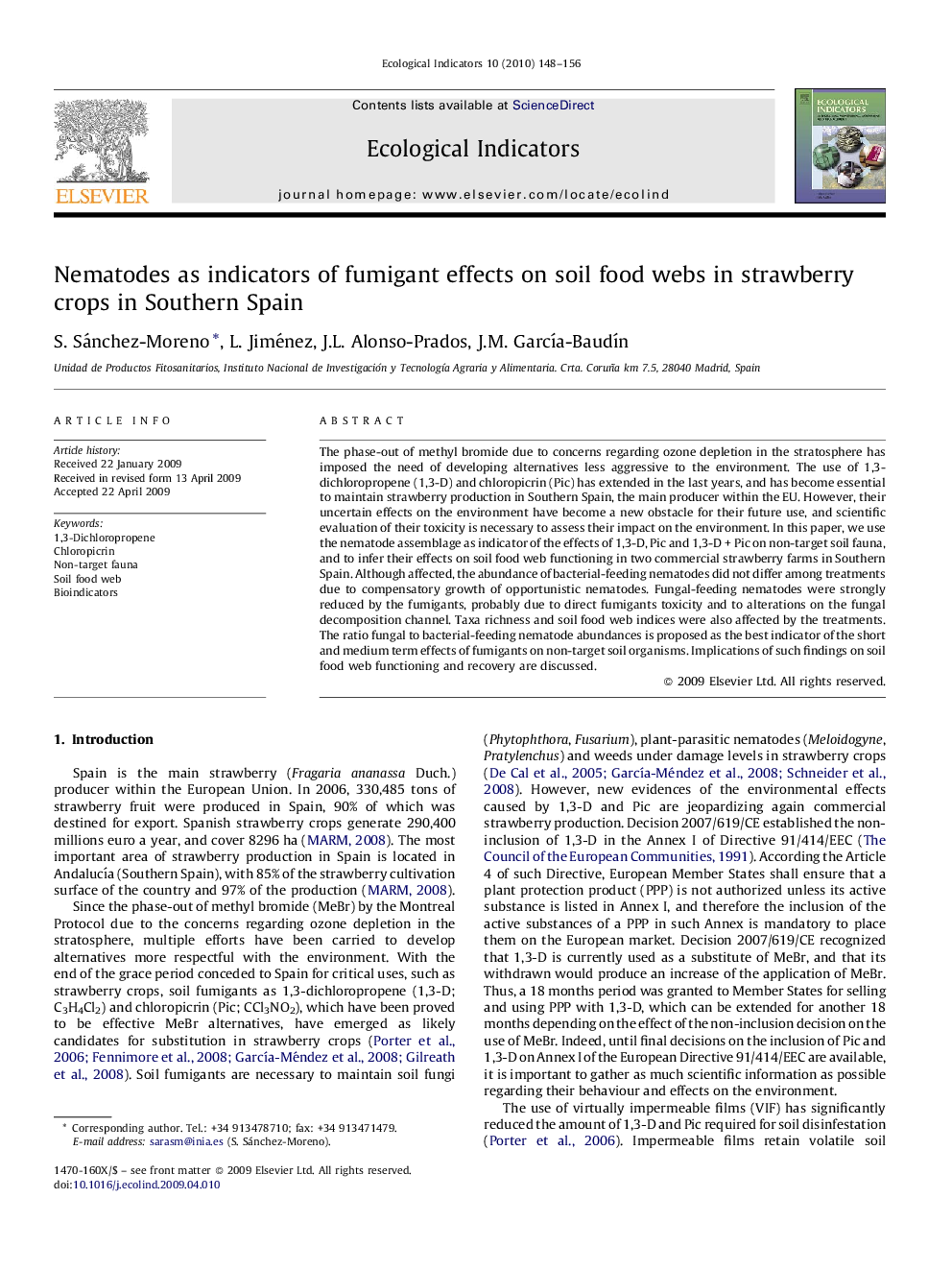| Article ID | Journal | Published Year | Pages | File Type |
|---|---|---|---|---|
| 4374268 | Ecological Indicators | 2010 | 9 Pages |
Abstract
The phase-out of methyl bromide due to concerns regarding ozone depletion in the stratosphere has imposed the need of developing alternatives less aggressive to the environment. The use of 1,3-dichloropropene (1,3-D) and chloropicrin (Pic) has extended in the last years, and has become essential to maintain strawberry production in Southern Spain, the main producer within the EU. However, their uncertain effects on the environment have become a new obstacle for their future use, and scientific evaluation of their toxicity is necessary to assess their impact on the environment. In this paper, we use the nematode assemblage as indicator of the effects of 1,3-D, Pic and 1,3-DÂ +Â Pic on non-target soil fauna, and to infer their effects on soil food web functioning in two commercial strawberry farms in Southern Spain. Although affected, the abundance of bacterial-feeding nematodes did not differ among treatments due to compensatory growth of opportunistic nematodes. Fungal-feeding nematodes were strongly reduced by the fumigants, probably due to direct fumigants toxicity and to alterations on the fungal decomposition channel. Taxa richness and soil food web indices were also affected by the treatments. The ratio fungal to bacterial-feeding nematode abundances is proposed as the best indicator of the short and medium term effects of fumigants on non-target soil organisms. Implications of such findings on soil food web functioning and recovery are discussed.
Related Topics
Life Sciences
Agricultural and Biological Sciences
Ecology, Evolution, Behavior and Systematics
Authors
S. Sánchez-Moreno, L. Jiménez, J.L. Alonso-Prados, J.M. GarcÃa-BaudÃn,
